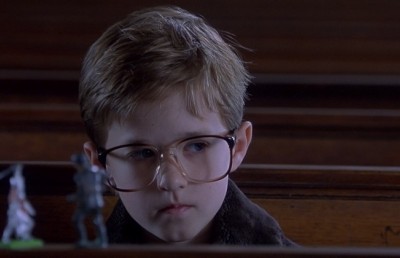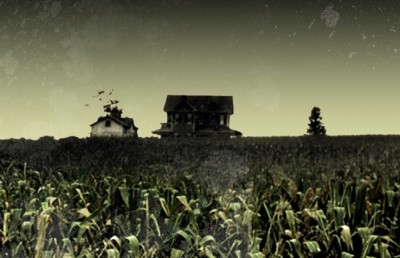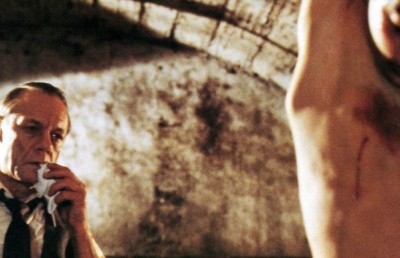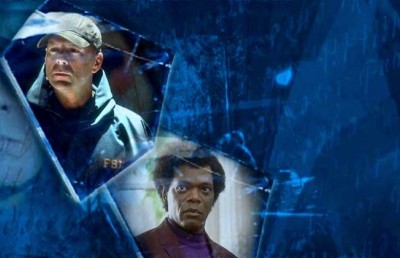Texas Chainsaw Massacre Redux
Texas Chainsaw Does Battle: 1974 vs. 2003
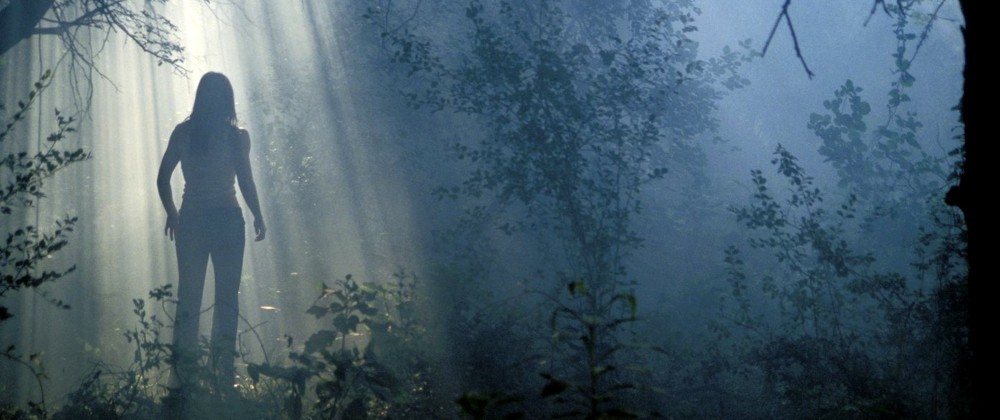
(This is an analysis, not a review. Hence it is peppered with spoilers. Do not read on if you have not seen the film, unless of course you have no desire to see it.) I will say right off the top that The Texas Chainsaw Massacre, the remake (Marcus Nispel, 2003), is an entertaining horror movie, with suspense, tension, some well placed startle scares, and repulsive villains. But, surprise, surprise, it can not hold a candle to the original. In a sense it never really even tried, in that it modernized the film to appeal to a broader audience, with all the compromises that entails. The look is slicker, the pacing is much quicker, the gore is more direct and obvious, and the characterisations are modeled on Hollywood ‘realism’ rather than Reality.
The remake follows the original fairly closely, but adds just enough changes and twists to make it interesting for people familiar with the original. The structure is modified by adding a framing device instead of the original’s mesmeric, opening radio exposition (although the same John Larroquette narrates!). Instead we have a grainy black & white Blair Witch Project-like mock documentary footage of a police video run through of the crime scene, the basement of Thomas Hewitt’s (Andrew Bryniarski) farmhouse, circa Texas 1973. Then what is in essence a ‘flashback’ begins and we are back to August 18, 1973, in the van with the proverbial five teens, in the front seat Erin (Jessica Biel) and her boyfriend Kemper (Eric Balfour), in the back seat love couple Pepper (Erica Leerhsen) and Andy (Mike Vogel), and fifth wheel/Franklin surrogate, Morgan (Jonathan Tucker). When the flashback ends, the film returns to the opening framing story with the policeman continuing his examination of the crime site. The twist is that the officer is attacked by a still living Thomas Hewitt (better known as Leatherface), abruptly ending the video, and concluding with the now obvious declaration that the crime scene was not properly examined and that the killer is still at large.
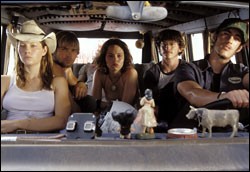
The central difference alluded to earlier in the film’s ‘modernisation’ is typified in the characterisation of Erin, and begins right from the opening scene of the flashback. The Jessica Biel character is immediately given the qualities of the virtuous Final Girl of the slasher film. While Andy and Pepper make passionate foreplay in the back seat, Erin tells her boyfriend Kemper that she expects a ring for her finger and wedding bells (and later when Kemper is hung to die by Leatherface indeed a ring does fall from his pocket). Erin also abstains from partaking in any of the pot they have smuggled back from Mexico. Right from this scene Erin is scripted as the heroine we will identify with. And as the film progresses Erin slowly takes command and becomes the kick-ass heroine, the Laurie Strode, Ripley, and Sarah Connor of her generation. Biel is physically convincing in the role, given her muscular, lithe body, but her beauty almost gets in the way. Director Nispel and DP Daniel Pearl always accentuate her physical beauty. Whether standing in the monstrous house, Hewitt’s butcher shop basement, a decrepit farmhouse, or an abandoned slaughterhouse, Erin, in tight jeans and tank top, is always lit for beauty with a sculpted light that chisels her from her ugly environment.
But more importantly, we know she is not going to die. The Final Girl of the original, Sally Hardesty (Marilyn Burns), is a survivor; Erin is a heroine, big time. The first evidence of this is classic: she is able to hot wire a car, and under much duress. When she is caught by the crazy family and thrown (literally) down the stairs into Leatherface’s basement lair, Erin comes across victim number two, Andy, with one leg cut off hanging like a slab of beef on a meat hook. Andy begs Erin to put him out of his misery, and Erin is courageous enough to commit euthanasia using a foot long carving knife. Later she finds Morgan lying in a vat of blood, and practically carries him out of the basement (aided by the crazy family’s lone good figure, the feral little boy Jedidiah [David Dorfman]). When chased by Leatherface Erin fights back using a meat cleaver to cut off his chainsaw wielding right arm. In the film’s climax, Erin, like Sally, runs onto the roadway and forces a rig to come to a halt. But whereas the truck driver, and subsequent pick up truck, are the Deus ex Machinas that save Sally, Erin only needs the truck driver as a plot device to distract the crazy family long enough so she can save the baby that was stolen from the teen mother whom they picked up on the road in the beginning. While the original’s Final Girl Sally sits in the back of the pick up truck, unable to do anything other than laugh hysterically, Erin has the mettle to save a baby, hot wire a car while under great pressure, drive over very bad guy Sheriff Hoyt not once but three times, and then drive off to safety. We identify with Erin because we would like to think we would behave like her. We empathise with Sally because deep down we know we would probably behave like her. We worry for Erin, we shudder for Sally.
Although the original script was not exactly a model of character development, it holds more than the remake in terms of creating characters with personality. On the side of the victims, the fifth wheel figure Morgan is nowhere near as effectively annoying and pathetic as the wheelchair bound Franklin (Paul A. Partain). The bigger difference is in the depiction of the crazy family. In the original film the ‘family’ was a closely knit and exclusively patriarchal unit, with the rambunctious younger son/hitchhiker (Edwin Neal), his older, monstrous but child-like brother Leatherface (Gunnar Hansen), the father (or older brother) figure (Jim Siedow), and the aged Southern patriarch Grandpa (John Dugan). In the remake, the crazy family is less defined, both locally and genetically. The one constant is of course Leatherface, here given the name Thomas Hewitt. The grandpa equivalent is the amputee, wheelchair bound ‘old Monty’ (Terrence Evans); sheriff Hoyt – R. Lee Ermey in yet another role as a crazy Southerner – is the equivalent of the father/older brother figure. But the remake adds a matronly grandmother figure named Rudy Mae (Marietta Marich, who looks like a matriarchal homesteader from a John Ford western), the waif-like, child craving younger woman Henrietta (Heather Kafka), and the obese, rocking chair-bound “Tea Lady” (Kathy Lamkin). What’s interesting to note is that the remake includes women everywhere in the scenario, while in the original there is not one female character seen anywhere outside of the two emanating from the van, Sally and Pam.
The remake both adds new elements and leaves out some classic moments from the original. In terms of plot and structure, aside from the framing story, the remake changes the hitchhiker to a distraught teen mother (Lauren German) who commits suicide because, as we later learn, she had her baby girl stolen from her by the ‘crazy family.’ Her suicide then becomes the plot device which causes the characters to make their fatal detour. They stop to report the suicide, which places them in a complicit loop where their every turn leads them to the crazy family. There is also a ridiculous attempt to humanize Leatherface by giving him a tiny back story about how he was ridiculed by his school friends because of his skin problem (yes, that explains everything!).
On the missing side, there is no classic dinner scene –possibly because the script could not accommodate the heroine Erin being subjected to such extended torture (or perhaps Biel herself would not consent to it?). While the art direction remains good in the remake, and borrows from the original, the bones n’ feather aesthetic is restricted mainly to Leatherface’s basement butcher shop, and there is no equivalent to the harrowing scene where the distraught, terrified Pam (Teri McMinn) falls into the horrible house’s living room and is aggressively ‘attacked’ by Hooper’s direction (extreme close-ups, frantic cuts, zoom shots, suffocating mise en scène, grating sound effects). Another important difference is that the remake is entirely stripped of the original’s social satire on rampant consumerism (reflected in the act of cannibalism) and the economic effects of industrialisation, and consequently has none of the original’s black humor and nuanced switches in tone. Sure the crazy family in the original is insane and despicable, but we can at least sympathize with their economic destruction as their old, manual labor style slaughterhouse methods are eclipsed by big industry, mechanised factory methods. In fact, some of the more memorable moments from the original derive from this satirical subtext. For example, how the ‘breadwinning’ father figure constantly expresses monetary concern amidst horrifying chaos: After knocking Sally unconscious, stuffing her into a potato sack and cramming her into the front of his pickup truck, he goes back to shut off the gas station lights, returns to the truck and laments, “Had to lock up and get the lights. The cost of electricity is enough to drive a man out of business.” Or, in the subsequent scene, he returns home after Leatherface has chainsawed his way through the front door, and bellows to the younger brother, “Look what you’re brother’s done to the door!”
The scene where Erin and Morgan are led to their basement escape by the good boy Jedidiah is, if not a clever homage to Orson Welles’ The Trial, a bizarre coincidence. With Leatherface hot on their heels, Jedidiah comes out of nowhere to lead Erin and Morgan out of the basement lair through a mazy, horizontally, wood-slatted tunnel. The scene, in its art design and lighting, echoes a scene at the end of The Trial where Joseph K, played by Anthony Perkins, is being chased through a similar mazy tunnel by a horde of tenacious, aggressive children. The possible intertextual interplay between the two scenes is striking and comical. The scene from Texas chimes like a perverse twist of the scene from The Trial: in The Trial we have the original cinematic Ed Gein, Anthony Perkins (Norman Bates), being chased by attractive looking but evil children; in Texas we have another Ed Gein figure, Thomas Hewitt, chasing victims who are being led by a hideous looking, but good child.
I alluded to Halloween with mention of Laura Strode, but there is another reference to Halloween in the scene following the above described, where Erin ends up taking refuge on the top floor of an abandoned farmhouse. She secures the injured Morgan behind a wood panel in one corner of the empty room, and then hides out behind a makeshift closet in the other corner. Leatherface enters the room and slowly searches it out for evidence of the two victims. Shots of Leatherface are intercut with Erin inside the closet and point of view shots of Erin peeping out at Leatherface through a large knothole. The whole setup recalls the similar scene near the end of Halloween where Laura Strode (Jamie Lee Curtis) secures the little boy she is safeguarding and peeps out at Michael Myers through the Venetian slats of the closet door.
This distinction points to another general difference between the two films. The remake creates a sense of claustrophobia mainly through the physical placement of characters in confined spaces, like the many scenes where Leatherface chases Erin into such spaces, or she is trapped into them: the front seat of vehicles, the closet in the abandoned farmhouse, or the locker in a slaughterhouse changing room. In the original film Hooper achieves a sense of claustrophobia mainly through his mise en scène (wide angle lenses, extreme close-ups, zoom shots, hand held camera movements, etc.). Both are effective, with one being more obvious (2003), the other subtler (1974).
In the end, The Texas Chainsaw Massacre version 2003 is an effective modern horror film which will eventually end up in an indistinguishable heap among other contemporary horror films. The Texas Chainsaw Massacre 1974 is a landmark film with images (and sounds) that have seeped under the collective skin and have marked and shaped a generation of horror filmmakers and fans. It is most likely by design that the remake coincides with Pioneer’s excellent 30th anniversary Special Edition DVD of the 1974 The Texas Chainsaw Massacre. Hopefully the remake will persuade younger horror fans to seek out the original. At the same time, the DVD gives fans of the original the opportunity to relive some of the original trauma.
To view trailer and photos of The Texas Chainsaw Massacre (2003) visit the film’s official website



